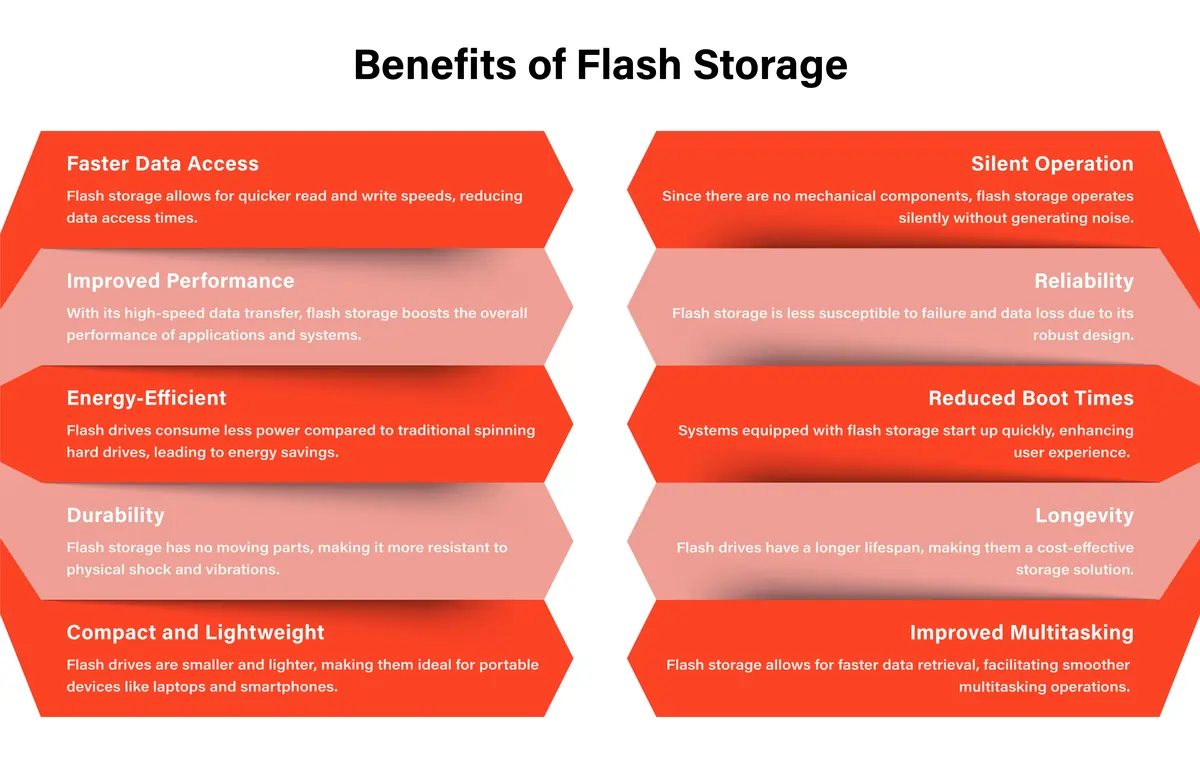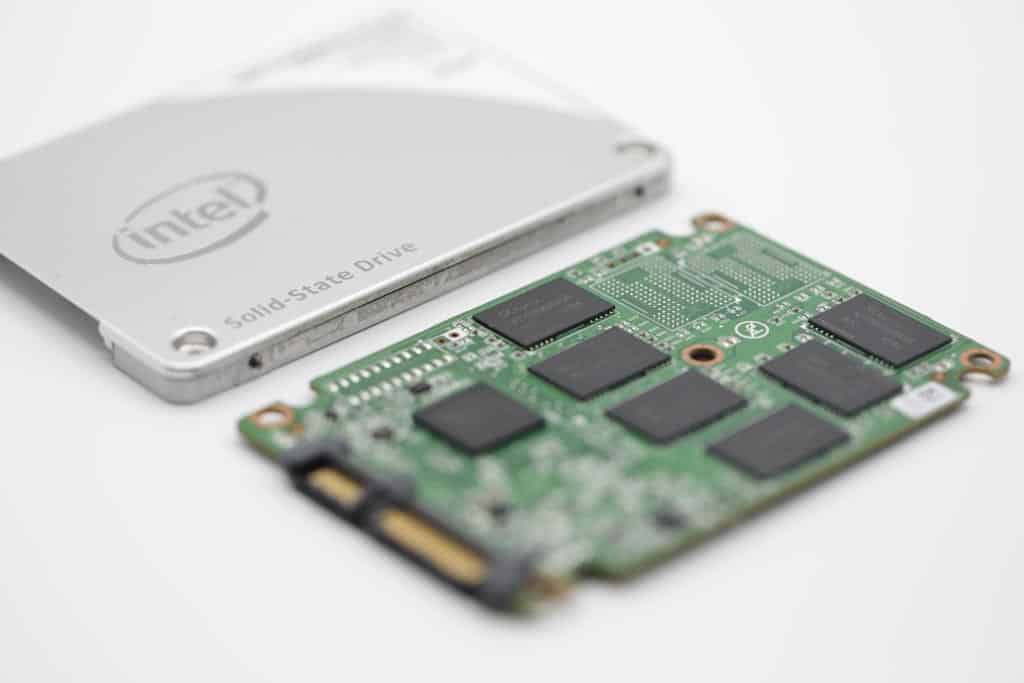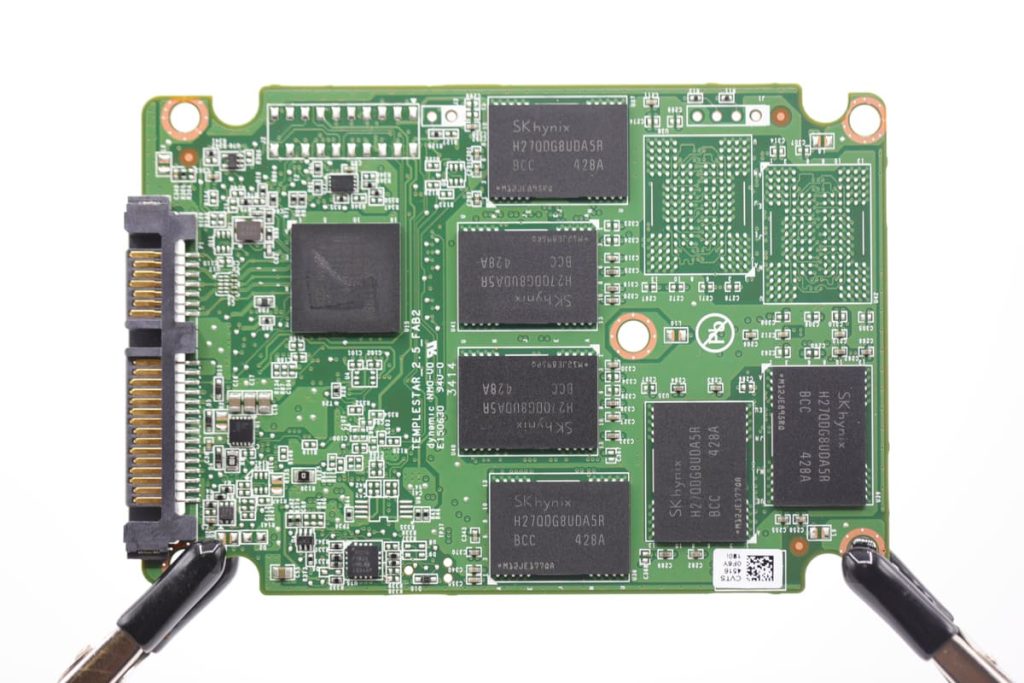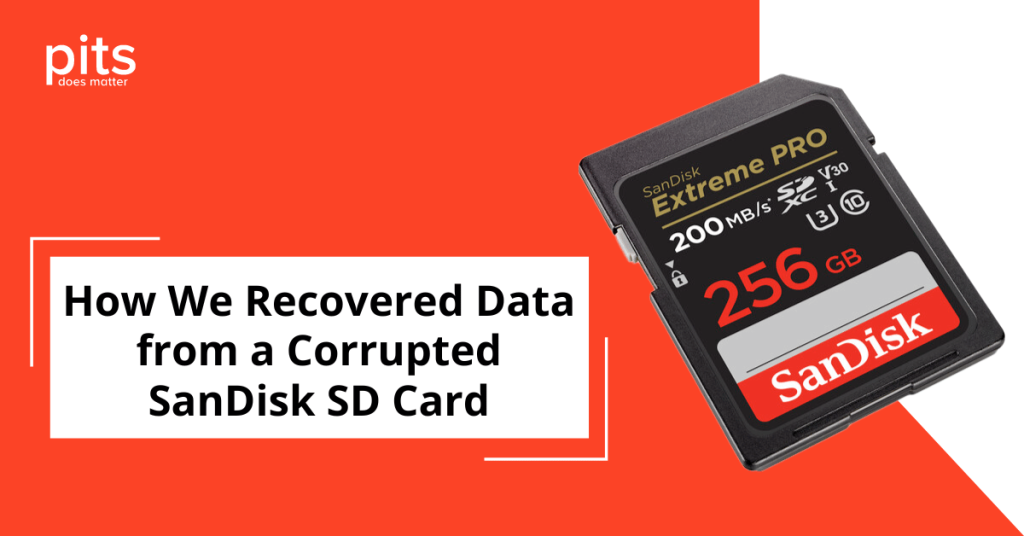In the contemporary and swiftly evolving digital environment, data is being generated at an unparalleled pace. Ranging from personal photographs and videos to vital corporate information, the sheer magnitude of data production is on an upward trajectory. Consequently, the imperative for effective and dependable storage solutions has assumed paramount significance. Among the technologies that have brought about a transformative shift in data storage and retrieval, flash storage stands out.
What Constitutes Flash Storage?
Flash storage denotes a category of non-volatile memory that upholds data integrity even when power is disengaged. In contrast to conventional mechanical hard drives employing rotating disks for magnetic data storage, flash memory utilizes semiconductor technology to establish a stable repository for information. This translates to notably swifter data accessibility, coupled with heightened resilience to physical impacts and vibrations.
The nomenclature “flash” originates from the rapid erasure of memory cells during data reprogramming, a process significantly expeditious compared to the conventions of magnetic disk storage. Owing to its myriad advantages over orthodox storage technologies, flash storage solutions have emerged as the cornerstone of contemporary data centers, laptops, and various other electronic devices.

The Progression of Flash Storage
Flash storage has undergone a substantial evolution since its inception. The technology made its debut in the 1980s; however, it was initially characterized by its expense and restricted flash drive storage capabilities.
It was not until the early 2000s that flash memory began to gain traction, coinciding with the introduction of flash-based USB drives and memory cards. These innovations brought about heightened portability and accelerated data transfer rates when juxtaposed with conventional storage mediums.
Over the passage of time, advancements in semiconductor technology and manufacturing processes contributed to augmented capacity, enhanced dependability, and reduced costs for these storage solutions. Presently, solid-state drives (SSDs) have emerged as the favored option for myriad consumers and businesses alike, surpassing conventional hard drives in terms of both performance and efficiency.
Advantages of Flash Storage
Velocity
Comparative to conventional hard drives, flash memory exhibits remarkable speed. It provides nearly instantaneous data access, thereby facilitating swifter boot times for operating systems and applications. Such heightened speed yields augmented productivity and diminished loading durations for demanding undertakings like video editing or executing intricate software.
Resilience
Lacking movable components, flash storage boasts heightened resilience and greater resistance to physical jolts and oscillations. Consequently, it proves highly suitable for integration into laptops and other portable devices prone to rough handling or inadvertent drops.
Efficacy in Power Utilisation
Flash memory devices consume less energy in contrast to traditional hard drives, thereby culminating in extended battery life for laptops and mobile devices. Furthermore, within data centers, it contributes to energy conservation and a reduced carbon footprint by virtue of its diminished power consumption.

Economical Use of Space
Flash storage typically boasts a more condensed form factor than traditional hard drives, enabling manufacturers to craft slimmer and lighter devices. This attribute is particularly advantageous for ultrabooks, tablets, and other devices constrained by limited space.
Whisper-quiet Operation
The absence of mechanical components in flash memory eradicates the mechanical noises that characterize conventional hard drives, culminating in a more serene computing encounter.
Dependability
Flash storage exhibits lower susceptibility to data corruption and file fragmentation, thus presenting a more dependable data storage solution. This abridged vulnerability to data loss renders it an enticing choice for critical applications and systems.
Challenges and Prospects for the Future
While flash memory has ushered in notable advancements in data storage technology, it encounters several challenges. A fundamental concern revolves around the finite number of write cycles that each memory cell can sustain prior to deterioration. Nonetheless, manufacturers have been actively addressing this matter through the implementation of wear-leveling algorithms and enhanced memory cell designs.

Casting a gaze forward, the outlook for the future of flash memory appears promising. Ongoing research and development endeavors are concentrated on augmenting storage capacities, mitigating costs, and further refining performance. Furthermore, nascent technologies such as 3D NAND flash and Storage Class Memory (SCM) are positioned to push the frontiers of flash storage capabilities into even more remarkable realms.
In summation, flash storage has emerged as a revolutionary technology, fundamentally reshaping the modalities of data storage, accessibility, and administration across diverse industries. Its velocity, dependability, and energy efficiency have elevated it to the preferred preference for an extensive array of applications. With the march of technology persisting, flash memory is poised to assume an increasingly pivotal role within our digital milieu, thereby unlocking fresh avenues for data-powered innovations and encounters.
Frequently Asked Questions
What constitutes the principal disparity between flash storage and conventional hard drives?
Flash storage utilizes semiconductor technology for data storage, whereas traditional hard drives rely on rotating disks to magnetically store data. This foundational distinction culminates in swifter data access periods, heightened durability, and diminished power consumption for flash storage.
To what degree is flash storage resilient?
Can it endure rough handling and physical impacts?
Flash storage demonstrates marked resilience due to its absence of moving components. It possesses an enhanced capability to endure rough handling and physical impacts when juxtaposed with traditional hard drives. This attribute renders it a superlative selection for laptops, tablets, and other portable devices susceptible to daily wear and tear.
Can I replace the conventional hard drive in my laptop with a flash storage SSD?
In the majority of instances, affirmative. Numerous contemporary laptops are devised to accommodate SSDs, frequently facilitating the substitution of the conventional hard drive with a flash storage SSD. Such an upgrade can substantially elevate the laptop’s performance and responsiveness.
What is the duration for which data can persist on flash storage without a power source?
Flash storage constitutes non-volatile memory, signifying its capacity to retain data even in the absence of power. Under normal circumstances, data can endure flash storage for several years without necessitating any power supply.
Are there any disadvantages associated with employing flash storage?
While flash storage proffers a plethora of benefits, it does entail certain limitations. A key concern revolves around the finite quantity of write cycles that each memory cell can undergo before deteriorating. Nonetheless, contemporary SSDs incorporate wear-leveling algorithms to distribute write operations across memory cells, thereby mitigating this challenge to a considerable extent.
We’re Here to Help
Our experienced team is committed to helping you recover your critical data. No matter the situation, we work diligently to ensure the best possible outcome. Take action now and let us restore what’s important to you.
Start Recovery Process
"*" indicates required fields


